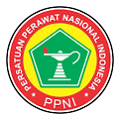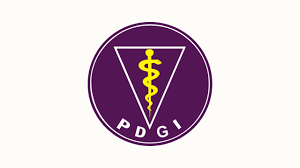Determinants of The Incidence of Childbirth Complications in Bandar Lampung City
DOI:
https://doi.org/10.26630/jk.v16i1.4817Keywords:
Childbirth, MMR, Post-natal mothersAbstract
In 2021, the Maternal Mortality Ratio (MMR) in Lampung Province increased significantly, rising from 115 to 187 cases compared to 2020. Bandar Lampung emerged as one of the areas with the fourth highest MMR, recording 15 cases (8.02%). This study aims to identify determinants of childbirth complications among mothers in Bandar Lampung in 2024. This type of research is analytical-descriptive, with random sampling, so that samples are obtained from 432 post-natal mothers. This research method uses interviews and observations of post-natal mothers analyzed through a quantitative cross-sectional approach with a random sampling of 432 participants. Results indicate a correlation between birth spacing (p=0.015, OR=2.725), history of pregnancy complications (p=0.000, OR=2.049), and parity (p=0.011, OR=1.764) with childbirth complications. Recommendations include improving healthcare services at the primary level and educating pregnant women and families on risk factors to reduce maternal mortality.
References
American College of Obstetricians and Gynecologists. (2019). Interpregnancy Care. Obstetric Care Consensus No. 8. Obs Gynecol, 133, e51-72. https://doi.org/10.1097/AOG.0000000000003025.
Arisandi, M.E., Anita, A. and Abidin, Z. (2016). Faktor-Faktor yang Berhubungan dengan Kejadian Komplikasi Persalinan di Wilayah Kerja Puskesmas Tanjung Bintang Kabupaten Lampung Selatan. Jurnal Kesehatan, 7(2), p. 204. https://doi.org/10.26630/jk.v7i2.189.
Artinanda, A., Fadliyah and Fira (2023). Analysis of Determinants of Childbirth Complications. Jurnal Promotif Preventif, 6(5), pp. 767–776.
Bauserman, M. et al. (2020). The relationship between birth intervals and adverse maternal and neonatal outcomes in six low and lower-middle income countries. Reproductive Health, 17(Suppl 2), pp. 1–10. https://doi.org/10.1186/s12978-020-01008-4.
Cavazos-Rehg, P.A. et al. (2015). Maternal Age and Risk of Labor and Delivery Complications. Maternal and Child Health Journal, 19(6), pp. 1202–1211. https://doi.org/10.1007/s10995-014-1624-7.
Hariyani, F., Murti, N.N. and Wijayanti, E. (2019). Hubungan Usia, Paritas, Dan Kelas Ibu Hamil Dengan Komplikasi Persalinan Di RSKB Sayang Ibu Balikpapan. Mahakam Midwifery Journal (MMJ), 4(1), p. 361. https://doi.org/10.35963/midwifery.v4i1.116.
Health Office of Province Lampung. (2021). Profil Kesehatan Provinsi Lampung Tahun 2021. 1st ed. Edited by Dinkes Provinsi Lampung. Lampung: Dinkes Provinsi Lampung.
Hulwatullaini & Rosidati, C. (2023). Determinan Kejadian Komplikasi Persalinan di Indonesia (Analisis Data Survei Demografi dan Kesehatan Indonesia Tahun 2017) Determinants of Delivery Complications in Indonesia (Analysis of Indonesian Demographic and Health Survey Data 2017). Journal of Religion and Public Health, 5(1), pp. 1–13. https://doi.org/10.15408/jrph.v5i1.36713.
Khairani, F., Pratiwi, B.R. and Putri, K.M. (2024). Hubungan Status Reproduksi Ibu Hamil dengan Kejadian Komplikasi pada Persalinan di Wilayah Kerja Puskesmas Dompu Barat. Jurnal Kesehatan Ibu dan Anak (KIA), 3(2), pp. 113–121.
Laili, U. and Andriyani, R.A.D. (2020). Pengaruh Status Nutrisi Ibu Hamil Terhadap Jenis Persalinan. Jurnal Menara Medika, 3(2), pp. 119–127.
Ministry of Health Republic Indonesia. (2022). Profil Kesehatan Indonesia. Jakarta.
Natasha, T.Z. and Niara, S.I. (2022). Determinan Kematian Ibu Serta Upaya dalam Penurunannya: Studi Literatur. Jurnal Ilmiah Kesehatan Masyarakat : Media Komunikasi Komunitas Kesehatan Masyarakat, 14(3), pp. 110–117. https://doi.org/10.52022/jikm.v14i3.73.
Ni, W. et al. (2023). Birth spacing and risk of adverse pregnancy and birth outcomes: A systematic review and dose-response meta-analysis. Acta Obstetricia et Gynecologica Scandinavica, 102(12), pp. 1618–1633. https://doi.org/10.1111/aogs.14648.
Nur, N.H. and Shahnyb, N. (2022). Faktor Risiko Kejadian Komplikasi Persalinan Ibu di Kabupaten Jeneponto. Jambura Journal Of Health Science And Research, 5(1), pp. 162–172. https://doi.org/10.35971/jjhsr.v5i1.17161.
Pasaribu, I.H., Rahayu, M.A. and Marlina, R. (2021). Studi Cross Sectional: Status Gizi Ibu Hamil Dan Komplikasi Pada Kehamilan. Jurnal Ilmu Kesehatan Mandrika Cendikia, 2(12), pp. 156–160.
Simarmata, O.S. et al. (2015). Determinan Kejadian Komplikasi Persalinan di Indonesia : Analisis Data Sekunder Riset Kesehatan Dasar 2010. Jurnal Kesehatan Reproduksi, 5(3), pp. 1–15. https://doi.org/10.22435/kespro.v5i3.3894.165-174.
Tanuwijaya, A.S. and Susanto, R. (2022). Prevalensi Komplikasi Kehamilan, Persalinan dan Nifas di Rumah Sakit X Jakarta Selama Periode Januari – Mei 2020. Syntax Literate ; Jurnal Ilmiah Indonesia, 7(12), pp. 18540–18557. https://doi.org/10.36418/syntax-literate.v7i12.10967.
Downloads
Published
Issue
Section
License
Copyright (c) 2025 Amrina Octaviana, Roslina Roslina, Nelly Indrasari, Eva Berliana

This work is licensed under a Creative Commons Attribution-ShareAlike 4.0 International License.
Authors who publish in this journal agree to the following terms:
- Authors retain copyright and grant the journal right of first publication with the work simultaneously licensed under a Creative Commons Attribution License (CC BY-SA 4.0) that allows others to share the work with an acknowledgment of the work's authorship and initial publication in this journal.
- Authors can enter into separate, additional contractual arrangements for the non-exclusive distribution of the journal's published version of the work (e.g., post it to an institutional repository or publish it in a book), with an acknowledgment of its initial publication in this journal.
- Authors are permitted and encouraged to post their work online (e.g., in institutional repositories or on their website) prior to and during the submission process, as this can lead to productive exchanges and earlier and greater citations of published work.












